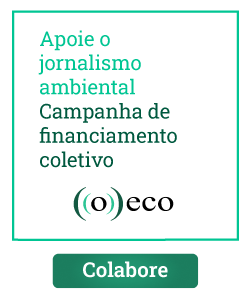
Brazilian protected areas store 28 years of national carbon dioxide emissions
The estimate links the global agendas of climate and biodiversity conservation
Federal, state and municipal parks and other protected areas in Brazil, both on public and private lands, cover about 18% of the continental territory, from grasslands in the far south to equatorial rainforest in the north, as well as savannas and wetlands.
That area covers almost 1.6 million square kilometers (km²) in the Amazon, Caatinga, Cerrado, Pantanal, Atlantic Forest and Pampa biomes, an area equivalent to that of the Amazonas – Brazil’s largest state – or half of India.
These ecological reserves comprise the National System of Protected Areas (SNUC, in Portuguese), whose main responsibilities include maintaining the country’s biodiversity and genetic resources. However, this public heritage is also key to balancing the climate.
The vegetation above and below ground in these protected areas stores 19 gigatonnes (Gt) of carbon, equivalent to 28 years of national carbon dioxide (CO2) emissions, a gas that exacerbates the greenhouse effect and raises global temperatures.
In 2021, Brazil emitted 2.42 Gt of CO2 equivalent, a measurement that includes other climate-affecting gasses, according to the System of Estimates of Greenhouse Gas Emissions of the Climate Observatory, a network of civil organizations on the climate crisis established in 2002.
The assessment made by the NGO Amazon Environmental Research Institute (Ipam) and ((o))eco Association estimated the amount of carbon present in the vegetation of the country’s terrestrial protected areas, linking the global agendas of biodiversity and climate protection.
“It’s essential to have this conversation between climate and biodiversity agendas in Brazil, where the loss of native vegetation is the largest source of greenhouse gas emissions,” highlighted by phone Ane Alencar, director of Science at Ipam and Ph.D. in Forest Resources and Conservation by the University of Florida.
The list of protected areas was obtained from the Brazilian government databases. The calculations used the average carbon stored in different types of flora from each biome, ranging from 593.8 tonnes of CO2 per hectare (ha) in the Amazon to 83.6 tCO2 per ha in the Caatinga.
Average stocks in other biomes are 413.5 tCO2 per ha (Atlantic Forest), 178.8 tCO2 per ha (Cerrado), 153.9 tCO2 per ha (Pantanal), and 128.2 tCO2 per ha (Pampa). This data came from the Brazilian Fourth National Communication to the United Nations Convention on Climate Change.
Thus, the 10 areas storing the most carbon are in the Amazon and are the national parks of Montanhas do Tumucumaque, Pico da Neblina, and Jaú; the ecological stations of Grão Pará and Terra do Meio; the state forests of Paru, Trombetas, and Amapá; the Tapuruquara Environmental Protection Area; and the Cujubim Sustainable Development Reserve.
The assessment also shows that Amazonian protected areas hold 92% of the carbon in the SNUC, not only because the native flora of the equatorial forest naturally accumulate much more of this element than other regions, but also due to the stark differences in protected area among the biomes.
While conservation units house 28.41% of the Brazilian Amazon, only 2.95% of the Pampa is protected by them. In the Pantanal, the conservation area corresponds to 4.68% of its territory, in the Cerrado 8.62%, in the Caatinga 9.16%, and in the Atlantic Forest 10.38%.
This shows that, especially outside the Amazon biome, there are significant opportunities to expand the protected areas system and advance – locally and globally – both the biodiversity conservation and climate protection agendas.
International goals call for the protection of at least 17% of the most important terrestrial areas for maintaining biological diversity and ecosystem services. And these reserve networks should be well managed and work together with other protective measures for nature.
Regarding administrative branches, carbon stocks are mainly concentrated in federal (54.01%) and state (42.53%) protected areas, with significantly less participation of municipal ones (3.46%). This is also due to the varying amounts of territories protected by each level of government.
The analysis also indicates that the 10 conservation units that lost the most carbon between their creation and 2022 were nine Environmental Protection Areas (EPAs) and one National Forest, all sustainable use reserves in Amazon, Atlantic Forest, and Cerrado. In sustainable use areas, the land is generally privately owned.
These are the EPAs of Triunfo do Xingu, Baixada Maranhense, Ilhas e Várzeas do Rio Paraná, Reentrâncias Maranhenses, Juqueri-Mirim Area II, Lago de Tucuruí, Bacia do Paraíba do Sul, Ilha do Bananal/Cantão and the Cantareira System, as well as the Jamanxim National Forest.
On the other hand, the estimate only shows a difference of 6.5% between the average carbon stock verified when the reserves were established and in the last year. This confirms the indispensable role of the SNUC in containing the loss of natural vegetation in the country.

However, threats to Brazilian environmental protection are not lacking. In addition to the fires that scorch the Pantanal and the Amazon at this time of the year, projects being discussed in federal and state legislatures could reduce or eliminate conservation units that hold 21% of the carbon in the SNUC.
The legislative proposals involve areas in the Amazon, Cerrado, Atlantic Forest, and Pampa. The Tamoios Ecological Station and the National Parks of Iguaçu, Campos Gerais, Serra da Bodoquena and Lençóis Maranhenses, are among the most threatened reserves.
“Ensuring that this large amount of carbon remains stored requires even greater care regarding fire incidence, deforestation, and other pressures on the national system of protected areas,” remembers Ane Alencar, from Ipam.
The carbon and CO2 estimate in the SNUC and data analysis were conducted by Bárbara Zimbres, a researcher at Ipam, and Aldem Bourscheit, a reporter for ((o))eco Association.
*Cover photo: Tapajós National Forest, by Marcio Isensee e Sá
Leia também

A Shrinking Home: a monkey cornered by deforestation
Researchers race against the destruction of the Amazon to ensure the survival of the Mato Grosso titi monkey, one of the world's most endangered primates →

Criminal frontiers
A global center of illegal trade in goods, the borders between South American countries have become a target for the growing and lucrative international trafficking of agrotoxics. →

Demand for soy puts pressure on Pantanal, Brazil’s largest wild wetland
Global demand for soybean has seen annual production of the crop in Brazil soar from 30 million tons in 2000 to 125 million tons today. Most of the agrochemicals consumed in Brazil are used on this crop. →












